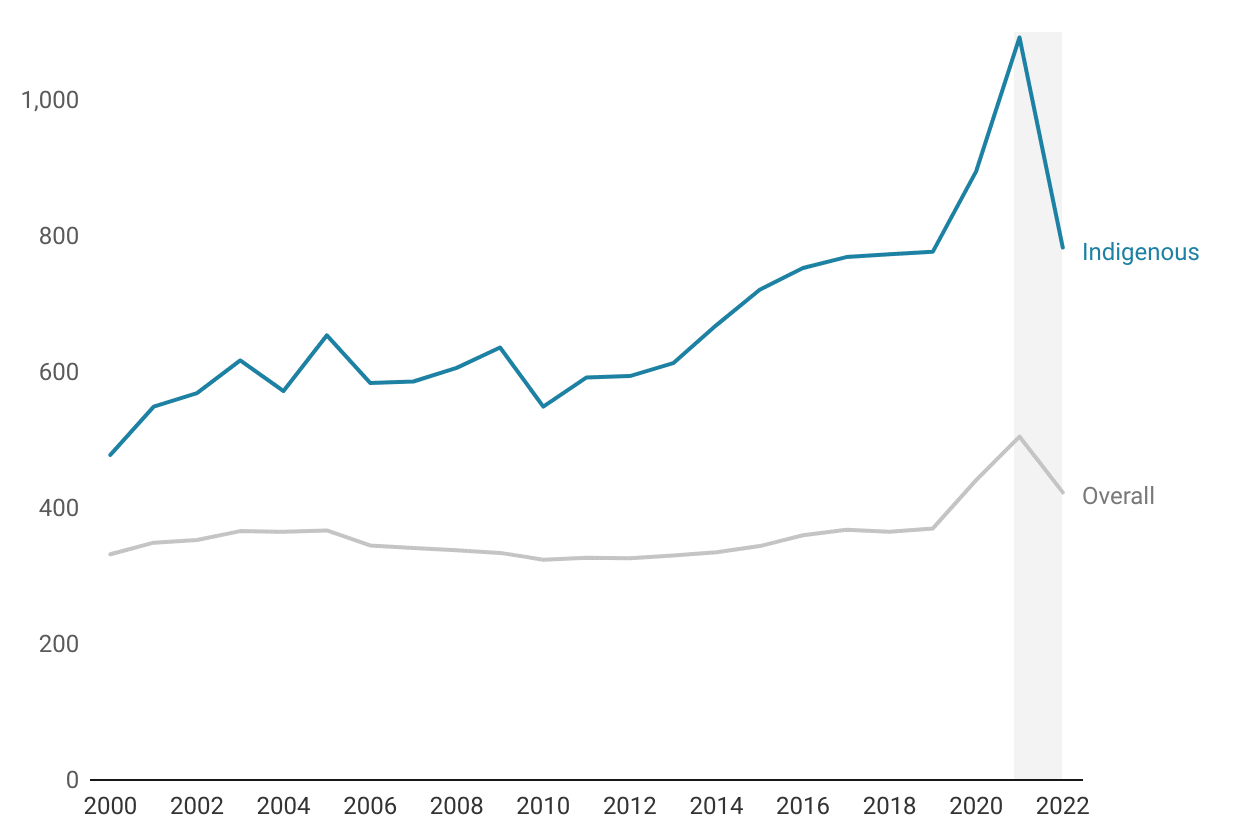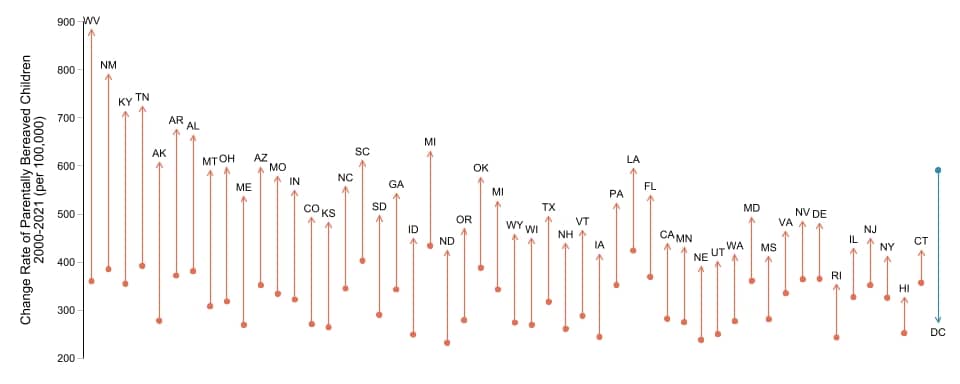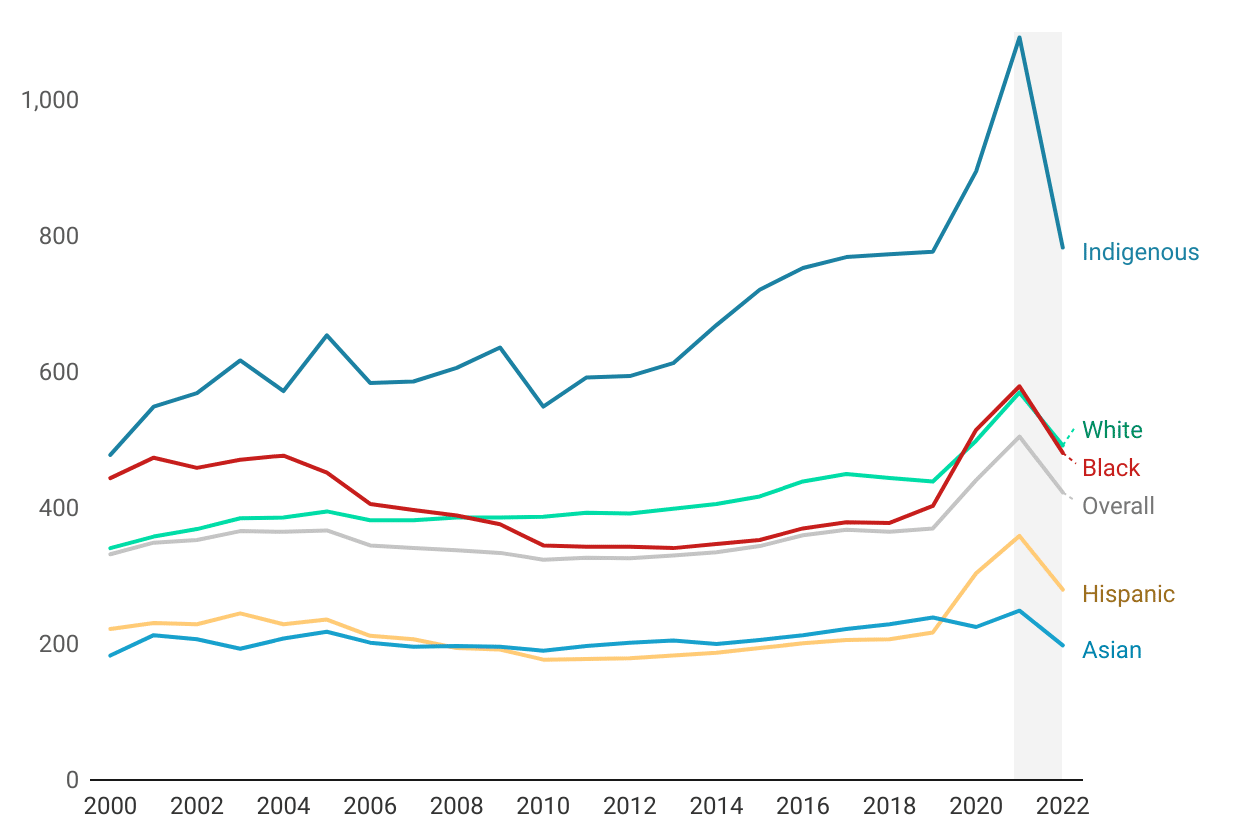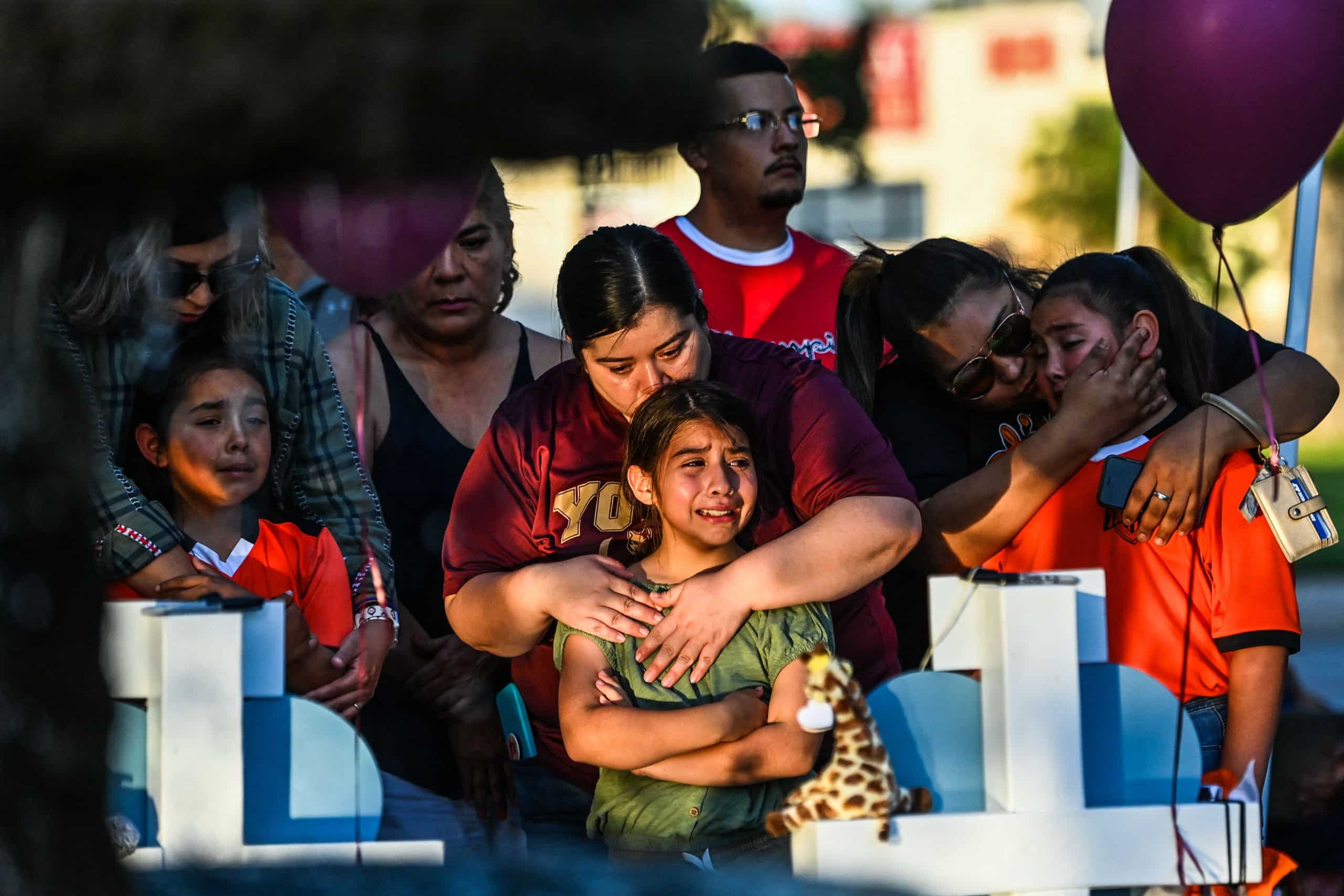America’s
Forgotten Orphans
An Urgent Call for The White House &
Congress to Address Childhood Bereavement
The Fierce Urgency of Now
With every day our nation waits,
another 850 American children become an orphan.
Today, more than 2.2 million children under the age of eighteen in the United States have experienced the death of a co-resident parent. As a result of their loss, many of these children face significant physical, social, and economic hardships for the rest of their lives.
In this first-of-its-kind report, we examine the current and historical trends in childhood bereavement and discover it is an epidemic hiding in plain sight impacting every state, race, and ethnicity in the nation.
Beyond discovering this crisis, we provide a road map for federal lawmakers, philanthropists, and other public leaders to create equal, healthy, and prosperous futures for all our nation’s orphans. You can learn more by downloading the full report.
Failure to take immediate action is unconscionable and irresponsible.
Five Major Findings
Annual Rate (Per 100,000) of Indigenous Children Under Age Eighteen Newly Bereaved by the Death of a Co-Resident Parent in the Previous Year by Race, 2000–2022
1. Indigenous Children Are In Crisis
Since 2000, Indigenous children have been parentally bereaved at a higher rate than every other racial or ethnic group, reaching an all-time high of 2.2 times the national rate in 2021.
Given the disproportionate variations in bereavement rates among racial and ethnic populations, state rankings are affected by the racial and ethnic composition of their child populations. This is particularly true for Indigenous children. For example, Alaska and New Mexico are two of the five states with the largest number of parentally bereaved children. This is because they both have a concentration of Indigenous children, who have a disproportionately high exposure to parental death. In Alaska, Indigenous children make up only 19 percent of the child population, but these children account for 44 percent of the bereaved child population. Similarly, in New Mexico, Indigenous children comprise 10 percent of the child population but 19 percent of the bereaved child population.
2. With each passing day, 850 children experience the death of a parent.
Based on the 2022 provisional data childhood bereavement data, an estimated 850 children will lose a parent on any given day.
More than 2.2 million US children (under age eighteen) have experienced the death of a parent or caregiver. These children are at higher risk of academic failure, substance misuse, suicide attempts, suicide, and premature death from any cause than their non-bereaved peers.
In the United States, the annual rate of parentally bereaved children was higher in 2021 than it has been for more than twenty years. But the uptick was not just the result of the COVID-19 pandemic; there were also related increases in mortality from other causes. Beyond heart disease and cancer, the leading causes of death in the United States, these other epidemics have robbed the lives of millions of Americans in their prime childbearing and caretaking years.
Consider the following statistics:
- Homicide rates rose more than 35 percent from 2019 to 2020;
- Overdose deaths rose 30 percent from 2019 to 2020 but fell between 2020 and 2021 by only 15 percent, resulting in a net increase;
- Traffic fatalities increased to more than 40,000 in 2020; and
- Suicide remains one of the top ten leading causes of death among people between the ages of ten and sixty-four and the second-leading cause of death among people between the ages of ten and fourteen and twenty-five and thirty-four.
3. Bereavement is an Urgent Health Concern for Children in All States
In 2020 and 2021, childhood bereavement reached a twenty-year high because of America’s concurrency of mortality epidemics, rising in every state.
Bereaved children face an array of hardships that pervade every aspect of their lives, creating formidable, and in some cases insurmountable, obstacles to their long-term health, economic security, and social stability. Compared to nonbereaved children, bereaved children are at higher risk of academic failure, depression, alcohol and substance misuse, violent crime, suicide attempts, suicide, and premature death from any cause. In addition, there is preliminary evidence that a significant proportion of incarcerated youth experienced the death of a loved one prior to incarceration. Each of these is a public health emergency in its own right. Exposure to death may pave the way or even accelerate children toward situations that threaten their health, and in some cases even their lives.
4. Childhood bereavement has risen significantly across every racial and ethnic population.
Since 2000, childhood bereavement has risen significantly across every racial and ethnic group.
Indigenous Children
Since 2000, Indigenous children have been parentally bereaved at a higher rate than every other racial or ethnic group, reaching an all-time high of 2.2 times the national rate in 2021.
Black Children
Black children have experienced a nearly 20 percent increase in annual rates of childhood bereavement since 2000 and an increase of 51 percent since 2013. Their 2021 rate—579 newly bereaved children per 100,000—is second only to that of Indigenous children.
Asian Children
From 2000 to 2021, the annual rate of childhood bereavement among Asian children increased by more than 22 percent.
Hispanic Children
From 2019 to 2020, Hispanic children experienced a 40 percent increase in the annual rate of childhood bereavement, the greatest single-year percentage increase in the past twenty years.
White Children
From 2000 to 2021, the annual rate of parentally bereaved White children increased by 65 percent. As a result, as of 2020, more than 1.3 million White children experienced bereavement during their lifetimes.
Annual Rate (Per 100,000) of Children Under Age Eighteen Newly Bereaved by the Death of a Co-Resident Parent in the Previous Year by Race, 2000–2022
5. Today, federal lawmakers and the White House are making the case to support only orphans who have lost a parent to covid-19.
If this policy moves forward, 95% of the nation’s orphans will be left behind.
Today, many politicians and other stakeholders are making the case that federal support should be provided only to children who have lost a parent or caregiver to COVID-19. Their efforts have been so successful that the Biden administration has codified its support for a COVID-only strategy in the National COVID-19 Preparedness Plan.
Unequivocally, COVID-19 has reshaped our nation’s health, disaster preparedness, and political priorities. More than one million people have died in the United States from the disease, leaving behind an estimated eight to nine million individuals who have lost a loved one. The bereavement associated with these deaths is profound.
Given the escalating levels of childhood bereavement in every racial and ethnic group and in every state in the nation, now is the moment for lawmakers and philanthropists to intervene and alter the course of lives for all children.
Three Facts You May Not Know About Childhood Bereavement
Childhood Bereavement is a Gateway to Other Public Emergencies
The death of a parent during childhood is associated with a higher risk of academic failure, depression, alcohol and substance misuse, violent crime, suicide attempts, suicide, and premature death from any cause.
Unlike Other Health and Social Concerns, We Know the Exact Moment to Intervene
At the moment a parent dies, we have a distinct and rare opportunity to intervene on a child’s behalf and alter their life’s trajectory toward stability, well-being, and prosperity.
This Is Not the First Time the United States Has Addressed Childhood Bereavement
While bereavement’s long-standing absence from current public policy debates and national health priorities, along with its newfound urgency, childhood bereavement is not a new policy topic in the United States.
National Action Agenda for All Bereaved & Orphaned Children
Evermore’s agenda identifies and addresses gaps in current federal programs, examines former programs that resulted in improved outcomes for bereaved children and families, and expands or emulates other model social programs. Our approach to policy is that it serves as the scaffolding for individual and family well-being, stability, and prosperity. Our agenda is not monolithic in its attempt to “solve” bereavement: rather, it is continual and will evolve over time, but undoubtedly we must get started.
Our policy recommendations fall into four broad categories:

Provide Economic Security for Families
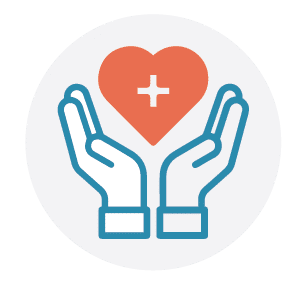
Provide Access to Health Care

Develop Supportive Community-based Programs

Invest in Data Collection and Research
What Does Childhood Bereavement Look Like In Your State?
If you’re interested in learning more about how many parentally bereaved children are in your state, including how many children would be left behind by a COVID-only national agenda, check out our state one-pagers.

